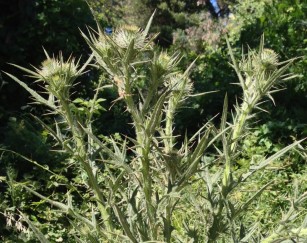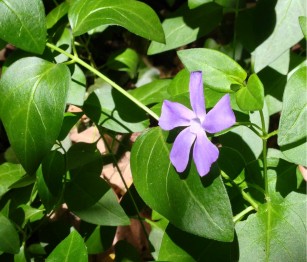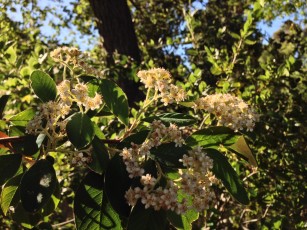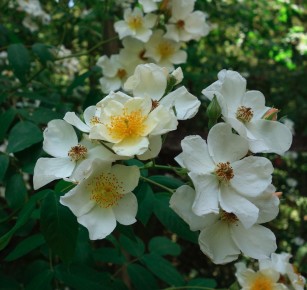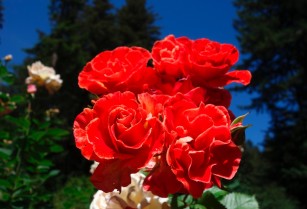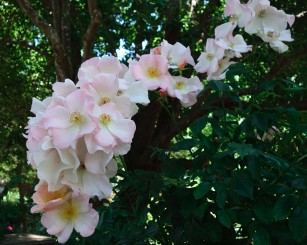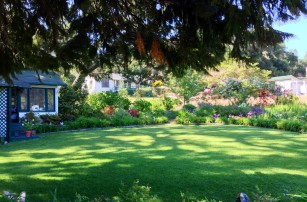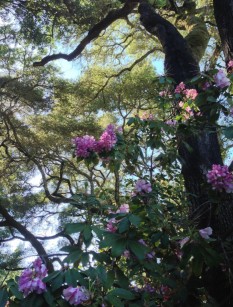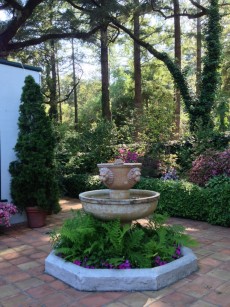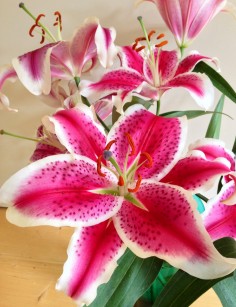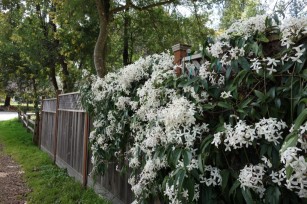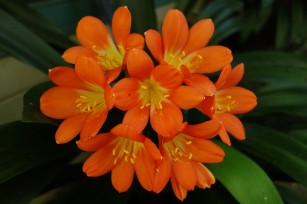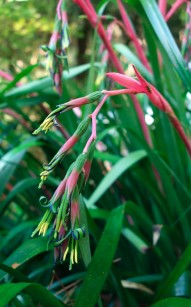When you look out your windows into your landscaping what catches your eye first? Maybe the hydrangeas are looking beautiful about now covered with giant flowers in sky blue, dark pink or white. Maybe it's the purple and red spikes of your salvias that both you and the hummingbirds enjoy. But I'll bet the most majestic and inspiring sight in your garden are the trees that frame your house giving it a sense of permanence, welcoming you home and providing a haven for songbirds that serenade you on a spring day.
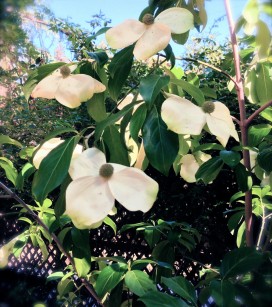 Large or small trees make the world go round. They produce oxygen and act as a giant filter that cleans the air we breathe. A mature leafy tree produces as much oxygen in a season as 10 people inhale in a year.
Large or small trees make the world go round. They produce oxygen and act as a giant filter that cleans the air we breathe. A mature leafy tree produces as much oxygen in a season as 10 people inhale in a year.
Trees clean the soil by absorbing dangerous chemicals and other pollutants that have entered the soil. They can either store harmful pollutants or actually change the pollutant into a less harmful form. Trees can filter sewage and clean water that runs off into our streams. They can absorb and lock away carbon dioxide as wood so it is not available as greenhouse gasses.
If you live near a busy street trees can muffle the noise almost as effectively as a stone wall. They also act as a windbreak during windy and cold seasons reducing the drying effect of the wind and keeping it from blowing precious topsoil away.
Trees slow storm water runoff helping to recharge our Santa Margarita and Lompico aquifers. On top of all the cool things trees do for us they provide shade and cool us in the summer. In the winter they break up the wind reducing heating costs. Trees increase property values.
If you've been thinking about adding a few trees to your own property here are some of my favorites. Some don't get enough recognition and some are classics. All make great additions to the garden.
Early in spring the flowering plums and cherries let us know that winter is over and a new season has begun. Then the dogwoods start to bloom and we're awestruck. Maybe you know of an especially beautiful specimen that gets your attention each year when it blooms. There are a couple varieties that I like to include in designs that are easy to grow and live for many decades.
Introduced to me by Barrie Coate, the renowned arborist and horticultural consultant, the Evergreen 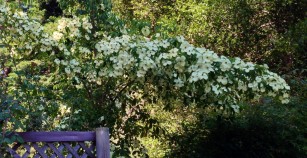 Dogwood, Cornus capitata, is also known as Himalayan flowering dogwood and lives up to its name in every respect. This under used tree is breathtaking in late spring and early summer with large flower bracts over 3" across. A friend has one in her garden and it is the showiest tree on her property for several months. This variety is slow growing reaching 20 ft tall in sun or partial shade after about 25 years. After flowering, red fruit provides a treat for the birds.
Dogwood, Cornus capitata, is also known as Himalayan flowering dogwood and lives up to its name in every respect. This under used tree is breathtaking in late spring and early summer with large flower bracts over 3" across. A friend has one in her garden and it is the showiest tree on her property for several months. This variety is slow growing reaching 20 ft tall in sun or partial shade after about 25 years. After flowering, red fruit provides a treat for the birds.
Another dogwood variety that makes a wonderful addition to the garden is the Venus dogwood. I've heard it said that some consider it even showier than the Evergreen dogwood but I like them all. It's a fast growing deciduous hybrid with white flowers as large as your hand. Summer flowers give way to strawberry-like fall fruit as the leaves turn color. It's highly resistant to disease and drought conditions. What's not to love? I also recommend Cornus Eddie's White Wonder for it's beauty and disease resistance.
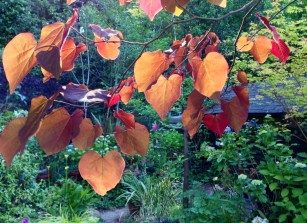
If you would like a tree in a certain spot but don't have lots of room, consider a Drimys winteri, commonly known as Winter's Bark. This evergreen, slender tree from Chile has aromatic mahogany-red bark which cured sailors in past centuries from scurvy and leathery fragrant leaves. Small clusters of jasmine-scented, creamy white flower appear in winter and spring. It grows to only 20 feet tall.
Other trees that are favorites of mine include Forest Pansy redbud for its stunning red foliage and Sango Kaku Japanese maple for its year round interest. Arbutus Marina, Oklahoma Texas redbud and Tristania laurina Elegant are also wonderful trees for the landscape.
Plant a tree for yourself and future generations.

